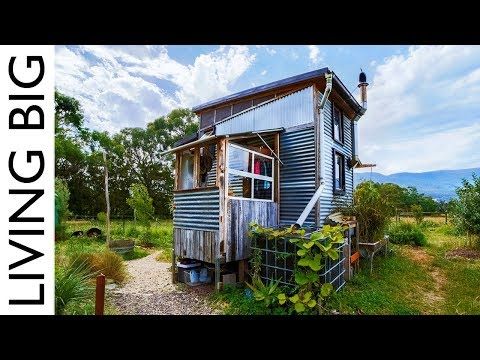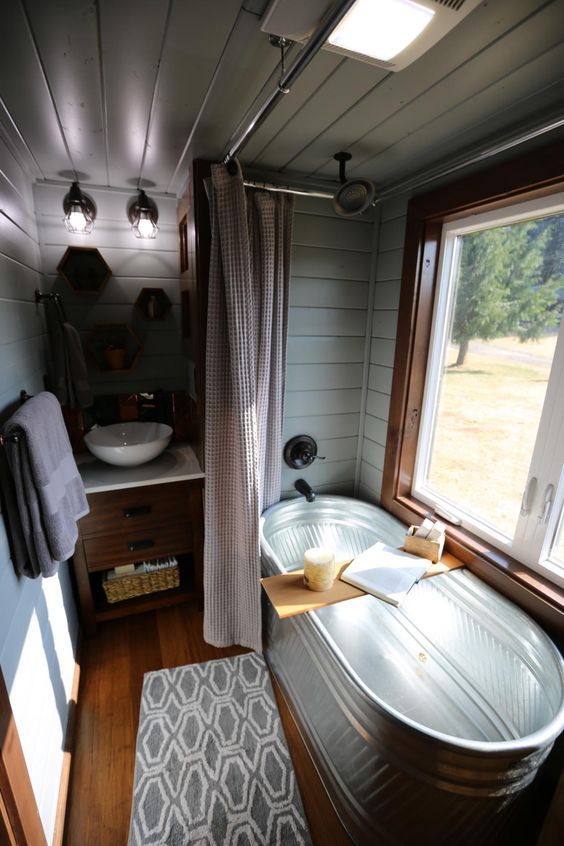Living in a tiny house doesn’t have to be a big challenge if you use your space management sparingly. You need to be aware of the things that should be set up to live successfully in a tiny house, and this is an important rule. Other things you should know about living in a tiny house follow:
House rules and codes vary from city to city
The tiny house laws from the state may vary, but some laws and regulations are standard. The tiny houses that were built on foundations with the exception of the state law must have at least one room at least 120 square feet in size, while the other rooms with the exception of the kitchen and bathroom must be at least 50 square feet in size. Contact your local council for more information on this matter.
There is a minimum ceiling height
The common areas in tiny houses must have a ceiling height of at least 6 feet and 8 inches, while the bathrooms must have a minimum ceiling height of 6 feet 4 inches. Several other building codes dictate how the tiny house must be built, and these codes must be strictly followed. Failure to follow these standard codes means the tiny house will not be approved.
No minimum number of windows required
Although there is no minimum number of windows required in a tiny house, all tiny houses must meet the minimum requirements for emergency exit points. When it comes to plumbing, there should be at least a separate bathroom, and the law also requires tiny houses to have ladders or stairs so people can reach the high regions.
Tiny house on wheels is considered a recreational vehicle
There are two types of tiny houses; the tiny houses on wheels and the tiny houses on the foundations. The tiny house on wheels is considered a recreational vehicle and the house must be registered as an RV and then you need to find a parking space. You have to remember that most cities do not allow home owners to live in a recreational vehicle. However, such rules are not always enforced unless they pose a serious problem to others.
Tiny foundation houses are considered additional residential units (ADUs).
The tiny houses on a foundation usually consist of huts and separate apartments, and some regulations prohibit this Secure land to build tiny housesTherefore, you can only build the tiny house next to an existing residential area.
Tiny houses are no more than 200 square meters
Although the rules and regulations regarding the allowable size of tiny houses vary from state to state, most state laws dictate that each tiny house cannot be larger than 200 square feet. Tiny houses are not specifically addressed in most states, but in most counties, ADUs can be up to 200 square feet in size. Anything bigger is no longer a tiny house. Most cities believe that tiny houses are still popular across the country.
In certain circumstances, you may not need permission to live in a tiny house
In some cases, in some counties, particularly where people are prohibited from using tiny homes that are considered motor homes for residential purposes, people can temporarily live in tiny houses if forest fires or other natural disasters occur until such problems are resolved are without having to look for a permit. People who have been displaced by fire or other disaster can go to the
Provision of safety equipment
If the unit is not part of a larger building, mechanical safety devices including fire extinguishers and normal devices such as hot air pressure hot water and heaters must be provided. Regardless of the apartment size of the tiny house, all necessary requirements for light, ventilation and safety equipment must be met. In addition to these rules, a free work area of at least 30 inches is recommended for a cooking device, a cooling unit and a sink. There must also be a separate bathroom with a toilet as well as a shower or bathtub and a toilet.
Provisions for additional number of people
While most states require a living room of at least 200 or 220 square feet, an additional 100 square feet of temporary space must be provided for each resident over 2 people. Some states are very strict when it comes to tiny houses. These states are particularly against any tiny housing development that overflows residential real estate. Even though there is a need for housing, these states have even strictly zoned and approved tiny homes that comply with regulations to prevent overcrowding of tiny homes.
Conclusion
Many counties are currently enacting and revising existing laws that are not popular at the state level. Many of these laws are being changed to be tiny-house-friendly, especially those Additional housing units (ADUs). Some states require owners of tiny homes on wheels to obtain permits or titles within 30 days of purchasing such homes. While some states are trying to use tiny homes as a temporary solution to the shortage of homes, others either aren’t considering it or are too slow to implement tiny home laws and regulations.
While the minimum size for a tiny house in most counties is 200 or 220 square feet, the larger states recommend a minimum of 400 square feet for tiny houses built for larger families (a family of 6). It is important to keep up to date with changes to existing small house laws and regulations, as well as newly added laws, to ensure that you do not violate such laws and suffer financial penalties or confiscation of your small house. In most cases, counties or councils often notify tiny house owners of new changes to existing laws and regulations, as well as newly added laws.
 TopsDecor.com Home Decor Ideas
TopsDecor.com Home Decor Ideas







